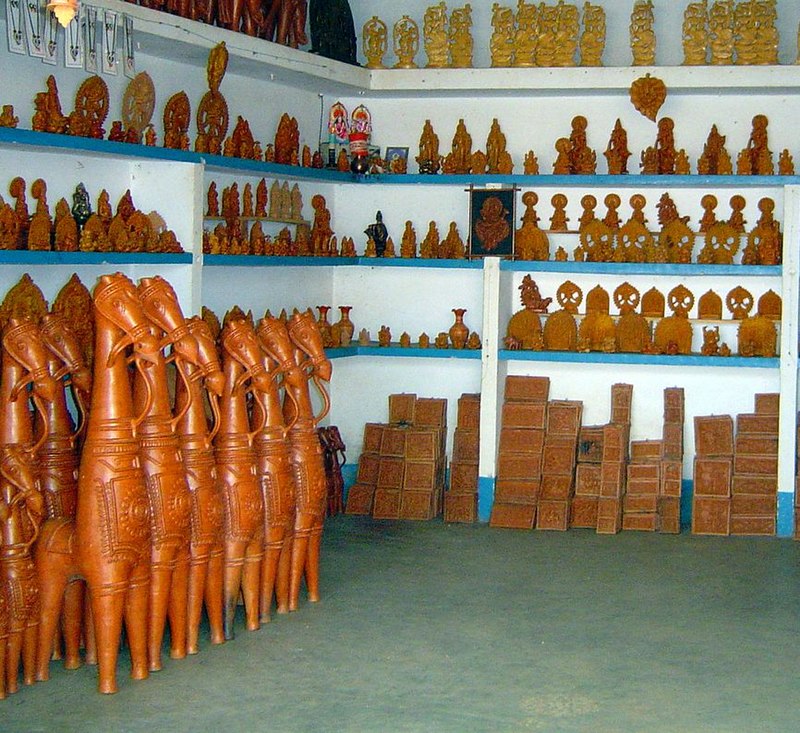ॐ श्री गुरुभ्यो नमःॐ श्री शिवानन्दाय नमः
Images of Bankura Terracota Horses are posted right below the following brief write-up. Please don’t miss viewing these cute horses before shifting online elsewhere.

A YouTube Video on Bankura Horses of Bishnupur in West Bengal :

Bankura horse is the terracotta horse, produced in the Bankura district of West Bengal in India. It has been lauded for its elegance widely around the globe.
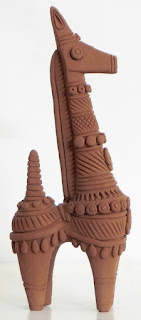
Originally used for village rituals, it now adorns drawing rooms across the world as a symbol of Indian folk-art.
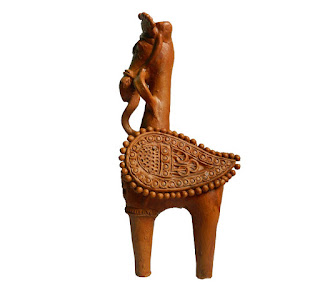
Bankura Horses: India’s Quintessential Best SOUVENIR
Bankura Horses are superior examples of ancient Indian folk art. Heavily revered for “elegant stance and unique abstraction of basic values” imbibed in this art form, Bankura horses are worshiped as Dharmathakur’s bahan and often symbolically sacrificed at “Thans”.

The terracotta art-forms of Bankura horses have made entry to modern households as a priceless addition to home decor.
A YouTube Video on Bankura Terracotta Horses
If you are looking to get home just one Indian souvenir, you do not need to look beyond Bankura horses! Bankura horses are featured as the logo of All India Handicrafts.
Terracotta or clay craft has been the symbol of man’s first attempt at craftsmanship. Because of its universal appeal, pottery has often been termed as the lyric of handicrafts.

Buy Bankura Terracotta Horses on Google Shopping
In India, terracotta traditions are found from the earliest times. The outskirts of many an Indian village, has a Peepul tree with terracotta animal figures lying underneath it. They are symbols of fulfillment of aspirations of village folks.
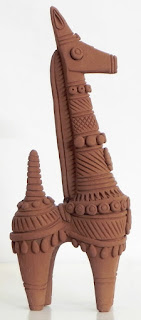
In order to cater to the commercial requirements of the modern global market, the village potters are often combining the traditional rural abstractions with refined urban tastes to create showpieces of terracotta art.
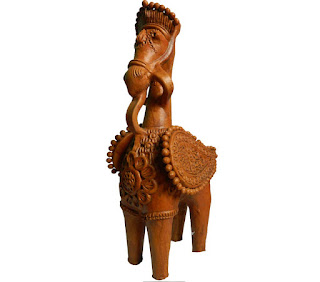
Buy Bankura Terracotta Horses on Amazon India
The principal centres where the terracotta horses and elephants are produced in Bengal, are Panchmura, Rajagram, Sonamukhi and Hamirpur. Each place has its own local style.

The Panchmura-style of pottery is considered the best and the finest of all the four types.
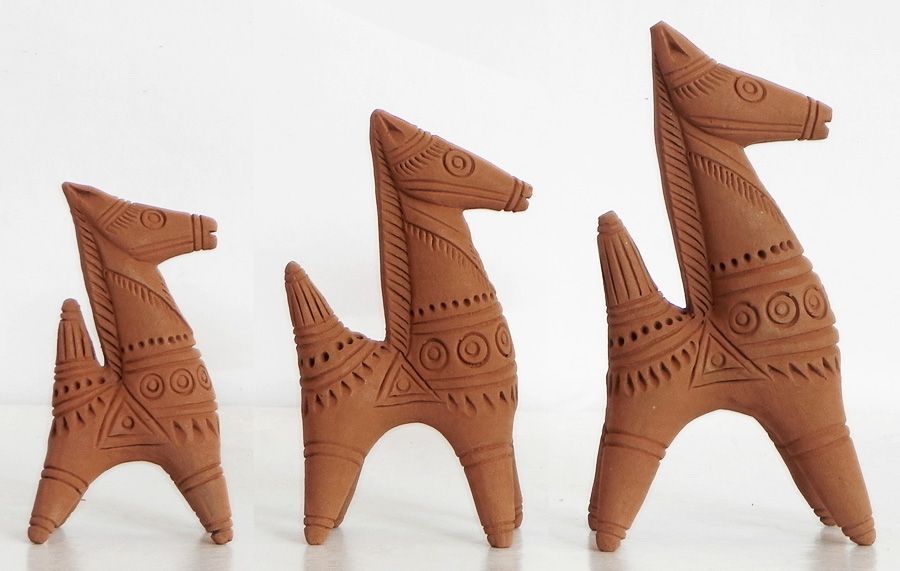
Watch a Stream of Videos on Bankura Terracotta Horses on Google Videos
The Terracotta Horses of Bankura are made in two different colours. The normal terracotta red color is obtained by letting out the smoke through the vents of the kiln after firing, and the black colour is obtained by sealing the vents and not letting out the smoke.
Buy Bankura Terracota Horses on Google Shopping

Watch a Stream of Videos on Bankura Terracotta Horses on Google Videos
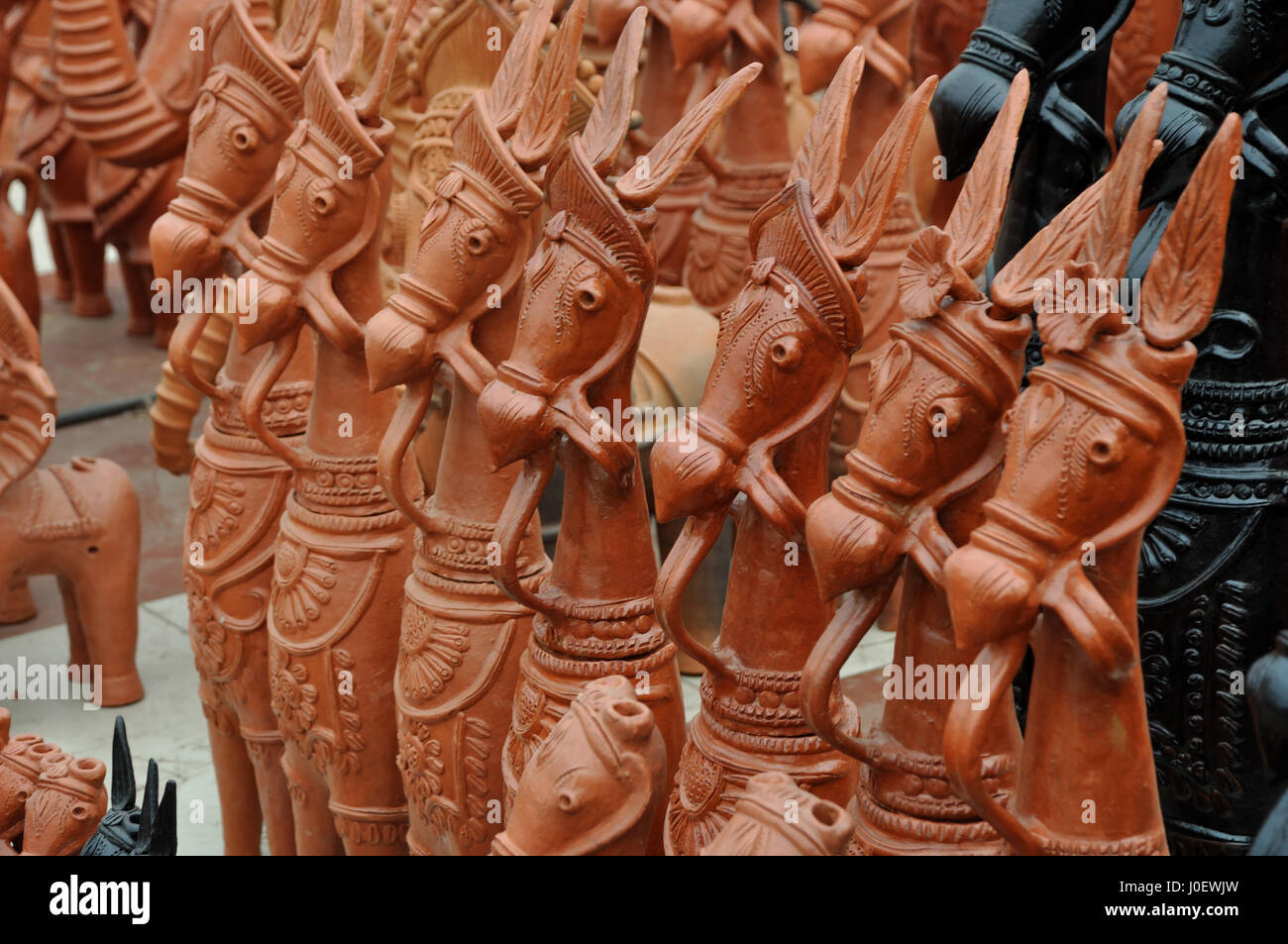
Terracotta or clay craft has been the symbol of man’s first attempt at craftsmanship, just as the potter’s wheel was the first machine invented to use the power of motion for a productive purpose. For many years, civilizations have been dated and assessed by the degree of skill and beauty displayed by the earthenware found in excavations.
Because of its universal appeal pottery has often been termed as the lyric of handicrafts. However, its association with religious rituals has imbibed it with deeper significance.
Watch a Stream of Videos on Bankura Terracotta Horses on Google Videos
In India, terracotta traditions are found from the earliest times. The outskirts of many an Indian village, has a Pipal tree with terracotta animal figures lying underneath it. They are symbols of fulfillment of aspirations of village folk.
In order to cater to the commercial requirements of the modern global market, the village potter is often combining the traditional rural abstractions with refined urban tastes to show pieces of terracotta art.
The principal centres where the terracotta horses and elephants are produced are Panchmura, Rajagram, Sonamukhi and Hamirpur. Each place has its local style. The Panchmura-style of pottery is considered the best and the finest of all the four types.
Different parts of the hollow terracotta horses are turned out in separate parts, on the potter’s wheel.
The four legs, the full neck in two parts and the face (seven pieces in all) are turned out separately on the wheel and then joined together. Additional clay is used for making up defects that may remain in the shape of the body.
The leaf-like ears and the tails are done in moulds and are later inserted in grooves left on the body. The clay figures are then allowed to dry in the sun. After a little drying in the sun, holes are made on appropriate parts of the body in order that the inner and the outer surfaces of the body are equally dried.
Cracks may develop in the body because of unequal drying of the inner and the outer portions. The dehydration is slowly done in the normal temperature of a closed room for about six or seven days. Then they are brought out of the room and heated in the sun. Finally they are burnt.
Terracota Horse of Bishnupur, Bankura, West Bengal
The terracotta horses of Bankura are turned out in two different colours. The normal terracotta red color is obtained by letting out the smoke through the vents of the kiln after firing, and the black colour is obtained by sealing the vents and not letting out the smoke.
In the Rarh region where Dharmathakur is worshipped there is no end to the symbolic use of terracotta and wooden horses.
Symbolic sacrifice of horses for fulfillment of wishes is common for many village gods and goddesses, but an assembly of terracotta horses of various shapes and sizes representing sacrifice on wish fulfillment is perhaps peculiar to Dharmathakur.
Shape
Terracotta horses and elephants in Bankura have been the creation of potters. Over the centuries they have moved away from a realistic presentation to a representational presentation.
Terracota Horse of Bishnupur, Bankura, West Bengal
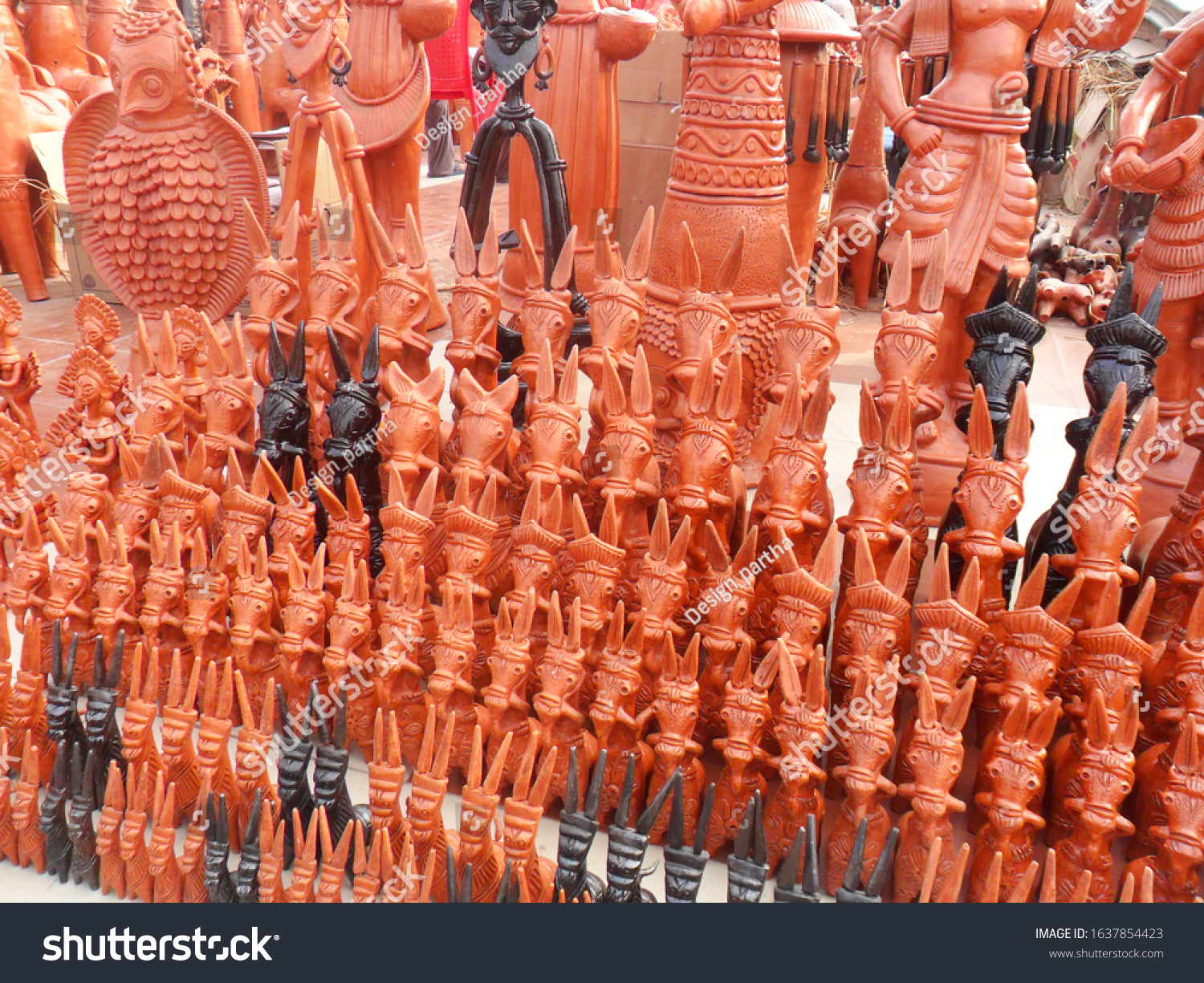
Potter-artists of different regions focused on different parts of the animal body in such a manner that representation of the same became more important than representation of the entire body of the animal.
Watch a Stream of Videos on Bankura Terracotta Horses on Google Videos
Geographical Indications
Bankura horse is registered under the Geographical Indications of West Bengal, named Bankura Panchmura Terracota Craft on 28 March 2018
Famous Bankura horse of West Bengal may become history
Popular Bankura horse or Panchmura horsethat evolved as the symbol of West Bengal over a period of time besides gaining a special place in the national crafts museum, is dying a slow death at the very place it derived its name from.
Bankura horses are terracotta horses that were once used more often for religious purposes, now they are used as decorative item here. This art originated in Bankura district of West Bengal.
These horses are known for their symmetric shape and rounded curves given to their body.
The Bankura or Panchmura horse gained popularity among the art lovers since it acquired a place in the works of renowned painter M. F. Hussein. However, Bankura horse has been part of a 300-year old tradition of Panchmura Village and has gained entry into drawing rooms across the country and various parts of the world.
Though Bankura horse has travelled to far off places, the artisans who have been making it for generations are struggling to survive. A visit to the Bankura’s Panchmura Village narrates the saddening story of Bankura artisans.
It is unusually quiet for an artisan village. And, the premises of most the dwellings draw attention to terracotta horse figurines staring out. There is hardly any activity here these days except a few artisans dusting their stock.
The gloomy picture of artisans’ condition bespeaks a dying cottage industry and sounds the death knell for a once thriving art form here.
Time changed but the process to make these pottery pieces remained traditional. The tools used for shaping it are made from bamboo and stones.
However, now this cottage industry is mired in problems. For almost two months during summer there no work. Over 300 individuals from 100 families involved in this business are finding the whole situation going from bad to worse every year.
The work is labour-intensive. Firing, moving the heavy horses and elephants, lacquering the items in direct sunlight, it is difficult. But the artisans have no choice.
Children also help as much as they can. It’s family-oriented source of income for these artisans. The sale and profits are very little,”say many of the artisans.
The potters’ wheel has stopped. The artisans only worship it in the hope that work would resume soon. Be it fairs, exhibitions or markets are held in winter.
With no tourists around, the local markets at Bishnupur and Bankura are left with very few takers for the terracotta artefacts. The old stock has piled up considerably.
The problem looks grave when one finds almost everyone in Panchmura is employed with this cottage industry. Be it women or children besides men folk, everyone is participate in the work process.
There is no alternative source of income for these villagers. The Panchmura Terracotta Artisans’ Cooperative is also at its wits ends trying to find clay, as the clay used has to be collected from paddy fields from a depth of 5 feet.
The clay available in and around the village has exhausted. Now it is be bought from others’ fields. There is no electricity so the fire to prepare the object has to be done with firewood that has already scarce. Hence, no firing is taking place.
“We tried negotiating with the forest department but to no avail. We don’t know if we can even fire anything in future,” says Taraknath Kumbhakar, the secretary of the Panchmura Terracotta Artisans’ Cooperative.
Artisans are compelled to prepare miniatures, which can dry in sunlight and don’t require fire process. After lacquering, they are to be fired but miniatures require much less firewood.
The Cooperative members hope for a marketing miracle. They are happy that individuals like acclaimed painter M.F Hussein adopted the Bankura horse and made it world famous.
But there is wistfulness too. The craftsmen desire some recognition and money coming their way too. They want to channelise their goods directly to the stately homes where the Bankura Horse reigns in supremacy.
The poor villagers say they have toiled for generations. Earlier, the market was the village itself. Now it stands diminished.
Various artisans had to switch over from making horses and elephants to utility items like conches, flower vases, ashtrays to find a larger market. A touch of abstract, some tribal etchings – everything was tried.
For some time the novelty factor played well. However, now, with no sustaining plan at work, the market has dwindled. Middlemen walk away with a large chunk of money. But the artisans ultimately find themselves left with nothing but their huge pile of unsold Bankura horse.
Read more at: https://www.oneindia.com/2008/05/09/famous-bankura-horse-bengal-history-1210331100.html


